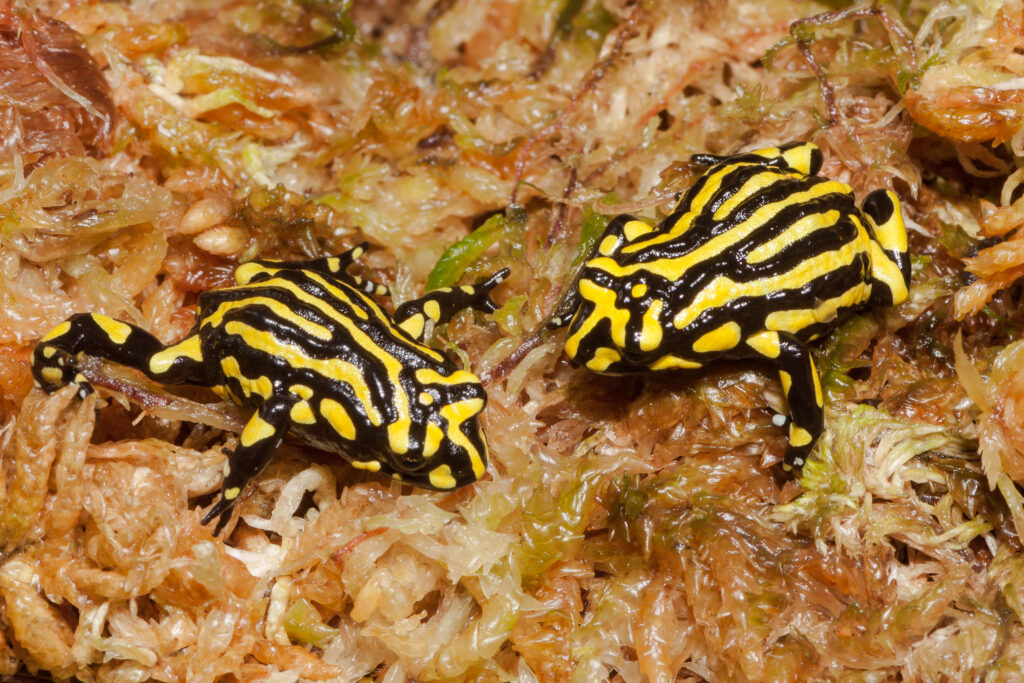Researchers have mapped the complete genome of the southern corroboree frog, one of Australia’s most endangered amphibians. This brightly colored frog, known for its yellow and black stripes, now survives only in Kosciuszko National Park with human help. Experts consider it functionally extinct due to disease and climate change-related habitat loss.
Frog’s Genome: A Unique Discovery
Dr. Tiffany Kosch, a researcher at the University of Melbourne, explained that the frog is part of an ancient group that has lived in Australia for nearly 100 million years. Despite its small size, the frog’s genome is about three times larger than the human genome. This finding reveals important details about the frog’s evolutionary history.
The frog’s genome contains many non-coding parts and repeating elements. These features suggest the species took a different evolutionary path compared to other frogs. Some of its relatives have much smaller genomes, with one species having one of the smallest frog genomes.
A Decade of Global Collaboration
The genome mapping project took ten years. Scientists collected frog tissue samples in Australia, then froze them at -80°C for transport. The samples were sent to the Vertebrate Genome Laboratory in New York for sequencing.
In the lab, the DNA was broken into small pieces, analyzed, and reassembled into a complete genome. Dr. Kosch and her team are now studying the genetic data to understand how the frog might resist diseases like chytrid fungus. This infection is killing frogs worldwide.
Innovative Approaches to Frog Conservation
Dr. Kosch said the research goes beyond genome mapping. The team is exploring selective breeding and gene editing to help the frogs resist diseases like chytrid fungus. These strategies could improve the frog’s long-term survival and benefit other endangered amphibians.
Hope for Other Endangered Species
The findings offer hope for other frog species facing similar threats. Dr. Kosch sees this research as the start of a long-term conservation effort, which could last another five to ten years. The team hopes their work will inspire other conservation projects.
Dr. Simon Clulow from the University of Canberra praised the study. He noted that amphibians are the most threatened vertebrates. Chytrid fungus is their biggest danger. He believes discovering genetic resistance is a major breakthrough in amphibian conservation.
Professor Nicki Mitchell from the University of Western Australia also supported the study. She explained that frog genomes are hard to sequence due to their size and complexity. Some frogs have extra sets of chromosomes, which complicates genome mapping. She called the southern corroboree frog Australia’s top priority for frog genome research.
Call for Increased Funding for Biodiversity
The southern corroboree frog is listed in Australia’s Threatened Species Action Plan. However, Professor Mitchell warned that over 2,200 other species also need protection. She said current government funding for biodiversity is inadequate.
The Biodiversity Council is calling on the government to allocate at least 1% of the national budget to nature conservation. Professor Mitchell argued that the frog represents two global challenges: climate change and rapid biodiversity loss.
